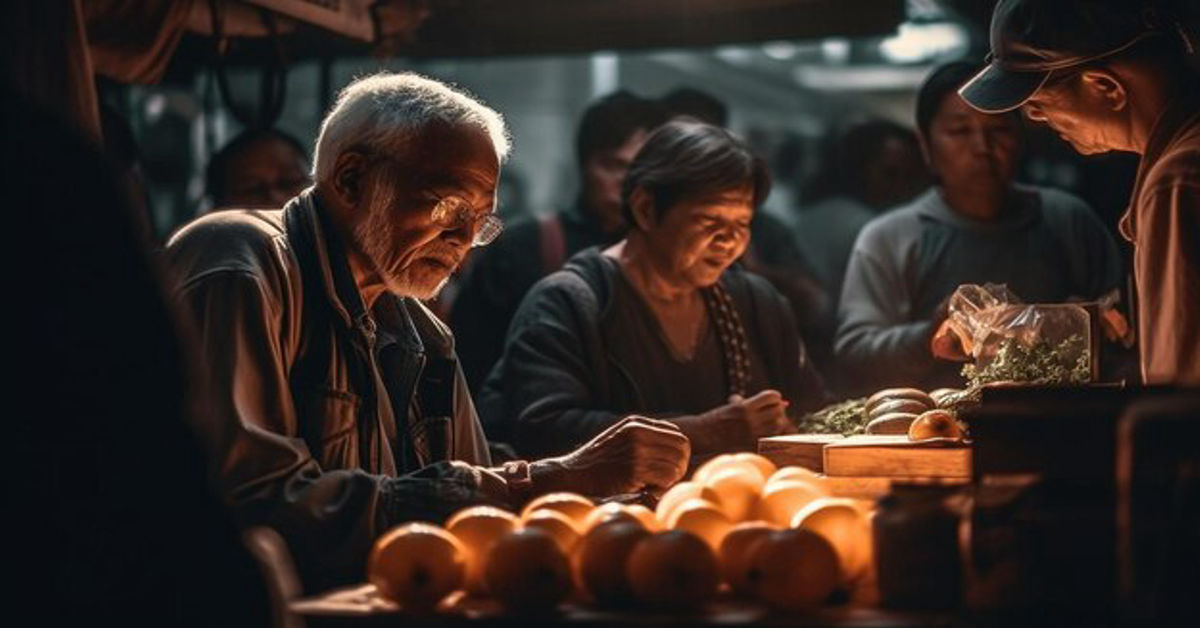In the heart of bustling urban life hawker centres remain a cultural staple in places like Singapore’s Chinatown. But behind the aroma of sizzling street food lies a growing concern—leftovers consumption. At several hawker locations, particularly in areas such as People’s Park Centre, elderly individuals have been observed eating leftover food abandoned by diners.
This phenomenon touches on multiple layers of society: food insecurity, environmental consciousness, dignity, and public health. The practice, though sometimes rooted in the intention to reduce food waste, raises critical concerns about hygiene and safety.
The Reality in Chinatown Hawker Centres
In high-footfall locations like Chinatown, hawker centres serve as a community hub for locals and tourists alike. Known for affordable, freshly cooked meals, these centers also inadvertently produce a large volume of leftover food.
Observations reveal that some elderly individuals wait near tray return stations or empty tables. After diners leave, they quietly approach the tables to consume remaining food. Most do so discreetly, often avoiding eye contact and minimizing interaction. It’s not merely an act of hunger—it’s often born out of a mix of necessity, habit, and the desire to avoid food wastage.
Why Some Individuals Consume Leftovers
Understanding the underlying reasons behind this behavior requires a look at several social, economic, and psychological factors.
1. Food Insecurity Among the Elderly
- Many of the elderly in urban areas like Chinatown live on limited pensions or government aid.
- Some feel ashamed to ask for help or visit soup kitchens and turn instead to public food sources.
2. Minimizing Waste
- There’s a deep-rooted cultural value in not wasting food, especially among older generations.
- For some, seeing edible food discarded is morally unacceptable.
3. Daily Routine
- For a few individuals, consuming leftovers has become part of their daily routine—a norm they’ve adapted to over time.
Food Safety Risks and Public Health Concerns
While the intent may be to reduce waste or meet nutritional needs, consuming leftover food from unknown sources poses severe health risks.
Common Food Safety Issues:
- Contamination from bacteria: Once food is left out in the open, especially in humid environments, it becomes a breeding ground for pathogens.
- Unknown exposure duration: Without knowing how long the food has been left on the table, there is no way to judge its safety.
- Cross-contamination: Tray return areas are frequently touched, increasing the risk of foodborne illness.
Health Implications:
- Food poisoning: Symptoms such as vomiting, diarrhea, and fever can arise.
- Long-term health effects: For older individuals with weakened immune systems, even minor contamination can lead to serious complications.
Ethical and Cultural Perspectives
The issue is more than just food safety. It’s layered with ethical dilemmas and cultural nuances.
- Public discomfort: Many diners report feeling uneasy when they witness their uneaten food being consumed.
- Cultural shame vs compassion: In many Asian societies, saving face is significant. Yet, there is also strong cultural encouragement to help the less fortunate.
- Moral conflict: Is it more ethical to let food go to waste or allow someone else to consume it even if it’s unsafe?
Voices from the Community
A local vendor at People’s Park shared:
“We see it happen daily. Sometimes we offer a fresh plate instead, but not everyone accepts. They say they don’t want to trouble us.”
A retired teacher, now 73, who chooses to consume leftovers, said:
“I don’t want free food. I just don’t want to waste what’s already cooked. If it looks clean, I eat it.”
These voices illustrate the complexity of the issue. It is neither fully an act of desperation nor entirely avoidable—it’s part of a broader social reality.
Alternatives to Unsafe Leftover Consumption
Rather than allowing this risky practice to continue unchecked, safer and more dignified alternatives can be explored.
Suggested Alternatives:
- Leftover Sharing Programs
- Diners can offer their untouched leftovers directly to those in need before leaving.
- Community Fridges
- Public fridges stocked with surplus food from restaurants and homes.
- Food Donation Kiosks
- Hawkers can contribute unsold but safe-to-eat food to nearby collection points.
- Meal Coupons and Vouchers
- Distributed by NGOs and local councils to elderly individuals for dignified access to food.
What Can Be Done: Recommendations and Solutions
Tackling the issue at its root requires a multi-pronged approach. Below are potential solutions involving various stakeholders.
| Stakeholder | Recommendation |
| Government Agencies | Implement safe food redistribution policies |
| Hawker Associations | Educate hawkers about responsible food donation |
| Diners | Encourage polite offers of untouched leftovers |
| NGOs | Develop food assistance programs targeting the elderly |
| Community Groups | Set up volunteer initiatives to monitor food safety and help at-risk individuals |
By integrating empathy with action, we can work toward a system that values both human dignity and public health.
Government and NGO Involvement
Several non-profit organizations in Singapore and similar urban centers have begun addressing food waste and insecurity. For example:
- Food Rescue SG: Focuses on collecting unsold cooked food from hawker centres and redistributing it.
- Willing Hearts: Prepares and delivers daily meals to low-income communities, including the elderly.
While these programs are impactful, further coordination with municipal agencies and increased funding could significantly amplify their reach.
Policy suggestions include:
- Regulating leftover-sharing zones with hygiene monitoring.
- Providing grants for hawkers to install food-safe donation boxes.
- Training volunteers to mediate safe food transfers in public dining areas.
Conclusion
The practice of Chinatown Hawker Leftovers Consumption centres reflects a deeper social challenge—balancing compassion with safety. While the desire to reduce waste and support the less fortunate is commendable, it cannot come at the cost of health or dignity.
As communities, vendors, authorities, and individuals come together to seek practical and ethical solutions, the ultimate goal remains clear: ensure that no one goes hungry while upholding public health standards.
This is not merely a food issue. It’s a societal one, calling for empathy, innovation, and community collaboration.
Frequently Asked Questions
What is leftovers consumption in Chinatown hawker centres?
It refers to the act of individuals, often elderly, consuming food left behind by others at hawker centres, especially in areas like People’s Park Centre.
Is it safe to Chinatown Hawker Leftovers Consumption?
No. Due to unknown exposure times and possible contamination, it poses serious food safety risks.
Why do some people consume leftovers at hawker centres?
Reasons include food insecurity, waste minimization values, and daily habit patterns among vulnerable elderly populations.
Are there legal restrictions against this practice?
Currently, there are no specific laws banning the act, but food safety regulations discourage it due to health hazards.
What are better alternatives to this practice?
Alternatives include leftover sharing with consent, community fridges, food donation kiosks, and support from NGOs offering meal assistance.







